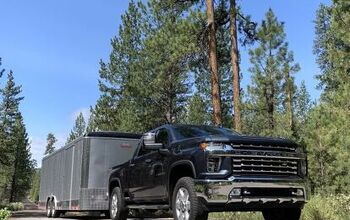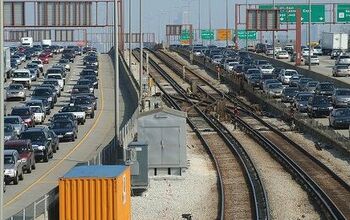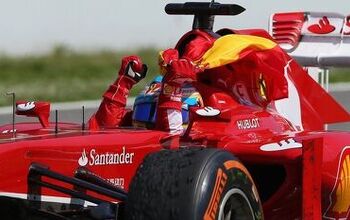Drive Fast — Responsibly
If speed killed, we would all be dead. After all, we are rotating around earth’s axis at up to 1038 mph (1670 kmh) and Earth is zipping around the sun at a whopping 66,660 mph (107,279 kmh). Speed’s not a problem. The problem is when we collide with objects that are moving at speeds that are substantially different than our own. Jack Baruth would have us believe that if we follow the advice he imparts in his “Maximum Street Speed Explained” series, that we can safely navigate American highways and byways, day or night while traveling at two or three times faster than the prevailing traffic norm. Unfortunately, his advice ranges from the obvious to absurdly dangerous (if he’s trying to be ironic or funny, he has very poor timing).
When the misguided double-nickel national speed limit was revoked, freeway accidents and fatalities declined. When this change went into effect, faster drivers tended not to drive much faster than they already were. However, the more compliant drivers sped up to the higher norms, narrowing the dissonance between the faster and slower drivers. Accidents declined even though the average speed on roads increased because traffic was moving at relatively constant and predictable speeds.
So when writing a series on how to drive faster, why not impart some advice on the best times and places to avoid traffic, animals and cops so we don’t make a menace of ourselves while indulging an automotive adrenaline fix? I guess addressing this didn’t occur to Jack. Here are a few examples of what we did get:
The obvious:
Your car needs to have its fluids at the appropriate levels, its tire pressures checked and its suspension components torqued. Your tires need full tread, no plugs, no camber wear.
But wait, there’s more:
You, as the driver, need to be alert, sober, rested, and ready to look all the way down the road.
This is brilliant stuff, folks! They really need to start teaching this to high school kids in driver’s ed.
Now for the absurdly dangerous:
Stay to the right . . . We come up on a car-to-be-passed from directly behind. We do this to attract the driver’s attention into his rear-view mirror.
And we mustn’t forget this pearl of wisdom:
Get in the habit of driving on the shoulder. We learn to drive on the shoulder because we’ll have to do it many times in the future, both to avoid panic-swerves and to pass recalcitrant lane-blockers.
Yes, the shoulder, a good place to pass because on US highways there is never any tire shredding debris that one cannot easily see and avoid while hurling along faster than 150 feet per second.
And for night driving, remember:
We don’t use the shoulder at night unless we have to. Confused deer . . . tend to hide out there.
Thank goodness that confused deer know the difference between the road shoulder and main lanes of the freeway. If they didn’t, it could be a problem for someone driving faster his ability to brake or maneuver around in the distance illuminated by headlights.
This next humdinger’s neither obvious nor absurdly dangerous. It is in a category all by itself. I’ll let you categorize it:
Cops expect you to speed in the left lane and they tend to look down the left lane. Stay to the right.
So cops are blind to cars traveling two to three times faster than the rest of traffic just because they are traveling in a lane 15 feet to the right. Uh huh. Maybe Ohio needs to get new cops with better eyesight. In Texas, they’re not so handicapped.
I could go on . . .
Here’s a clue, Jack: this ain’t Germany. American drivers tend to be poorly trained, distracted, easily startled, and unpredictable. Our highways aren’t maintained with the meticulousness required to make them Autobahn safe. And most of our roads lack the extra high fencing to keep large mammals from using the interstate as a game trail.
When traffic is traveling at a consistent pace and drivers are acting predictably, driving at high speeds on the freeway is a relatively low risk endeavor. But when some jackass thinks that he can weave through the flow at speeds 200 to 300 percent faster without introducing extreme risk to everyone else, no matter how skilled a driver he thinks he is, he is delusional.
Five years ago I attended the funeral of a friend who killed himself in a single vehicle accident while horsing around on his motorcycle. At least he had the decency not to involve other motorists by utilizing seldom-traveled country roads. Of course, that was little consolation to his devastated wife and the autistic child.
If you must prove your mad driving skills, join a club and take it to a track.
More by William C Montgomery
Latest Car Reviews
Read moreLatest Product Reviews
Read moreRecent Comments
- 28-Cars-Later $12K? I needed a good laugh.
- EBFlex Wait...the feds are claiming that inflation was not FJBs fault 6 months prior to an election where he is massively losing in the polls in every single category?Eyebrow raised.
- MaintenanceCosts Most of the article after the blockquote is Posky laboring mightily to somehow blame this clearly anticompetitive and oligopolistic conduct on the big bad government.I look forward to some of the usual commenters explaining to us that, actually, the oil industry is a cuddly teddy bear and the real villain is people trying to sell us cars that don't use oil.
- Bd2 A modest price bump for one of the better if not the best vehicle in it's class. And it's a very good deal still considering the Front wheel drive competition over at Lexus to name one. These Genesis vehicles are more like BMWs of the 90s but with better styling.
- Dave M. What???? Big business taking advantage of us? I thought it was all Biden's fault!?!

































Comments
Join the conversation